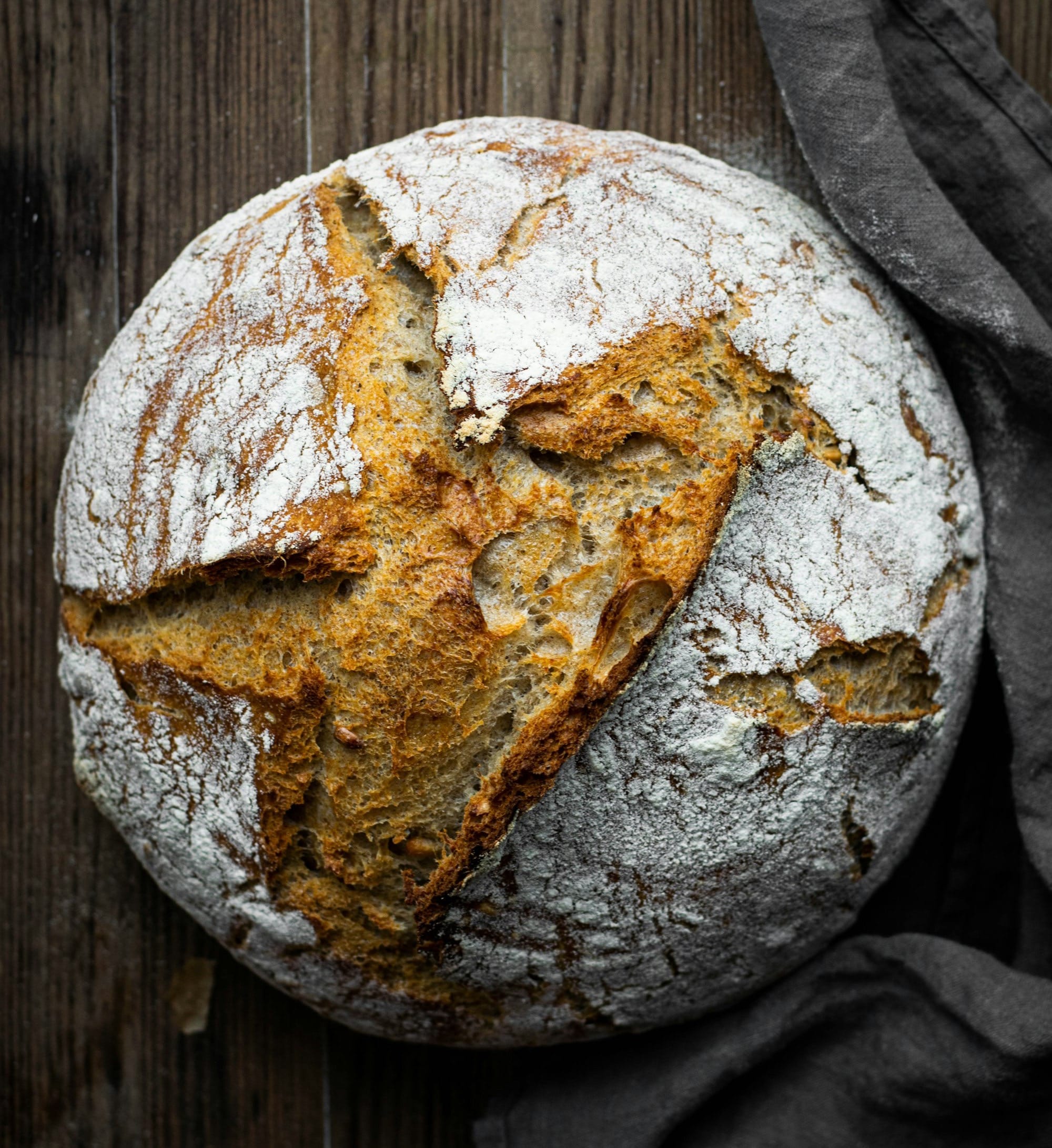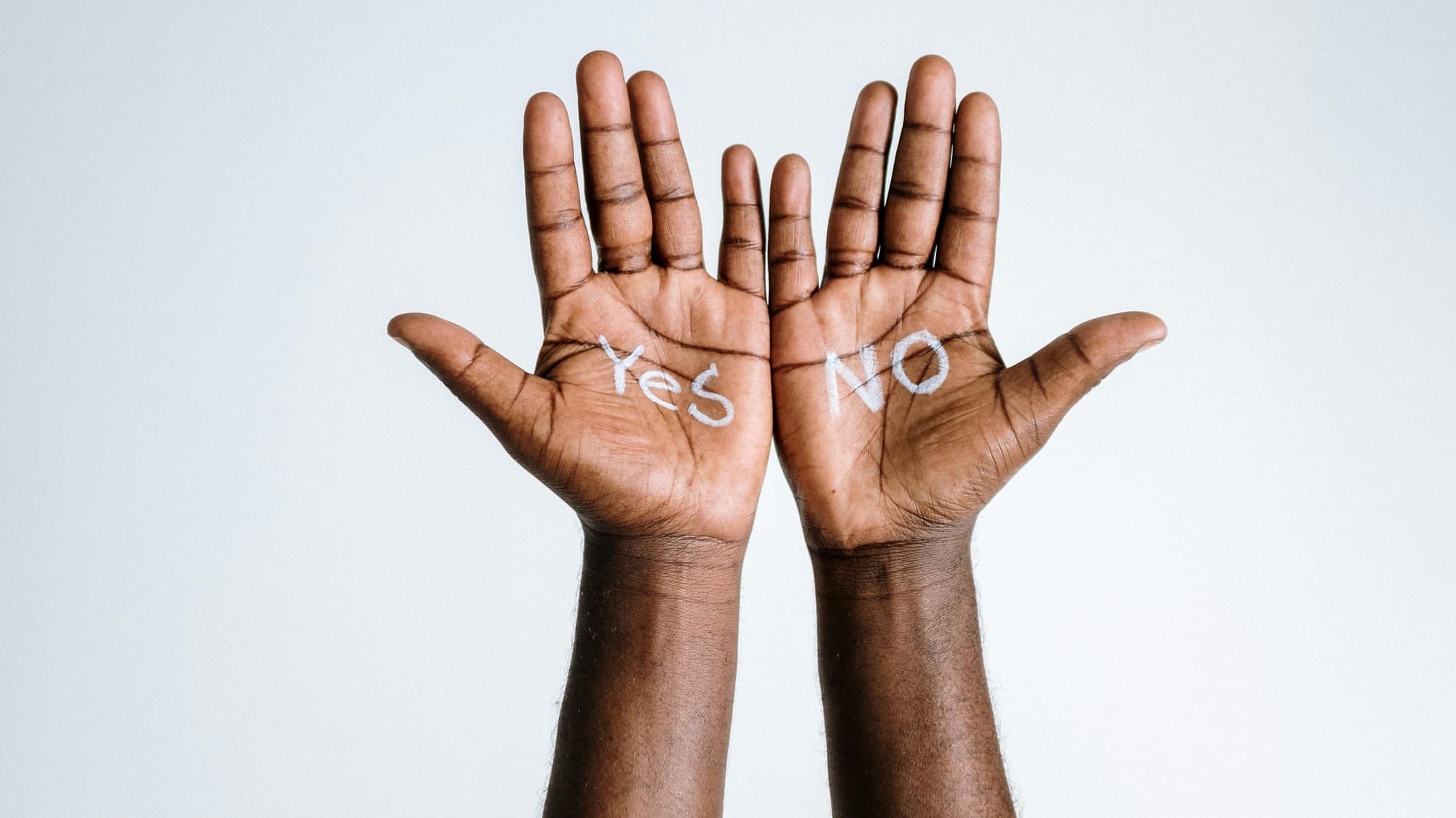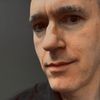PACT: a 4 Step Guide to Triangulating Truth
Introducing an easy-to-apply 4 step guide for figuring out truth, decreasing our risk of mistaken beliefs, and reducing our risk of making erroneous decisions.

In Part 1 of Triangulating Truth, we looked at why we need to use different but overlapping channels of information to reduce opportunities for mistaken beliefs.
In this article we introduce a practical 4 Step Guide for putting these principles into practice within our daily lives.
We can remember these 4 Steps with the acronym PACT:
- 1️⃣ P – Pause
- 2️⃣ A – Alternatives
- 3️⃣ C – Challenge
- 4️⃣ T – Tomorrow
So we might think of these 4 steps as our PACT with truth, and we’ll see how they apply shortly.
Laying the foundations
Although we’ll be focusing here on using our own senses as the channels of information we’re working with—they’re readily accessible to us and have a lot to teach us—these 4 steps and the principles behind them can be directly applied to any source of information, including any ‘truth’ we encounter from other people, institutions or traditions.
It’s a longer article than other ones you may have read here, and you may want to read it a few times. But it’s an important one because it lays a foundation for future topics.
So without further delay, let’s get started.
1. Pause
1.1 But is it true?
In What Is Truth? we used a thought experiment to help us intuit what we mean by ‘truth’. Our experiment involved working out whether something that looked like a chunk of bread really was a chunk of bread.

We’ll use that same example of a chunk of ‘bread’ here to introduce the 4 Steps—but remember, these steps are applicable to more tricky questions in life too. So keep in mind how we might apply them to other situations.
1.2 Seeing is believing
In our imagined experiment, we begin by approaching something that looks like ‘bread’ using a single channel of information: our vision. At this initial stage, our perception completely matches our internal idea of bread:
☑️ It looks like bread.
☑️ It’s within the expected context for bread (on a table).
☑️ Our internal goal (hunger) biases us towards hoping it’s bread.
So from the information we currently have about the ‘bread’, we automatically believe we possess the ‘truth’. We have a perfect match between information coming from the external world (through our senses) and the information coming from our internal world (our memory, current goals).
But wait. Like all aspects of being human, we know that this particular channel of information (vision) is limited.
Any visual information we receive is automatically constrained by our personal capacity to see. We may be colour-blind, short- or long-sighted, all of which affect what we believe we are seeing. But even if we have perfect human vision, we cannot see infrared as snakes do, nor ultraviolet like the bees, never mind X-rays and radio waves.

Would such additional information help us here? It’s hard to know. We can only work with what we’ve got and we tend to adapt our behaviour to the world as we recognise it at the time.
1.3 Recognising our own limits
But what we can safely conclude is that our vision only gives us a tiny fraction of total electromagnetic information potentially available (~0.0035–0.005%, according to some sources). Any useful information that might exist outside of our own personal capacity to see just does not exist—at least as far as we’re aware.
This, then, must be our first step in any attempt to triangulate truth: we must recognise our own limits, both as human beings and personally.
Our ability to know truth is automatically limited by our sensory limitations as human beings, as well as the channels of information available to us. These limitations may be due to (1) the limitations inherent within our own senses, (2) our capacity to use the information they provide, or it could be (3) the reliability of the information we receive via a third party. Consequently, what appears to be true to us might be an illusion, created by those limitations. The first step therefore is to PAUSE, because we know that if we act on our initial beliefs (no matter how convincing they may be), life has no undo button if we get it wrong. The more irreversible the consequences of we get it wrong, the more crucial it is to pause.
2. Alternatives
2.1 Error masquerading as truth
Continuing our thought experiment, our vision appears to be giving us a perfect match between our observation and what we think we’re observing. Maybe it’s right—but it could also be wrong. If it is wrong, it could still appear to be right. How can we tell? As what we learnt in part one, we’ll need some alternative source of information to triangulate.
2.2 Why look further?
The immediate problem we encounter is this:
If we believe we already possess the truth (“I have a perfect match!”), we have no incentive to seek alternative sources of information.
Why would we, if we’ve already found our ‘truth’?
But once we need to act on that ‘truth’, any decision we make based on our belief is going to have irreversible consequences. That’s all well and good if we really do possess the truth, but what if our actions are based on something else entirely? It leaves us vulnerable to poor decision-making, future regret and even deliberate manipulation by others.
2.3 Introducing a drop of uncertainty
How do we break this assumption that we already possess the truth? Let’s break down the problem.
First, let’s ask ourselves why we believe we already possess the truth? It’s because we currently only have one option (“it looks like bread [and nothing else]”) that matches our expectations. It probably doesn’t help that we’re hungry… feelings will often nudge us in specific directions.

It’s like being directed to a street and being told to knock on the red door. If there is only one red door in the street, there’s no ambiguity. Everything fits our expectations (street → red door → knock), and there is nothing in the street to undermine our certainty. But if we find ourselves in a street with two red doors, now we have ambiguity—and that ambiguity creates uncertainty. Which door is it? Are we even in the right street?! We now need further information.
Notice how adding that single drop of uncertainty (two possibilities, instead of one) alters what we are seeking:
- When there was just one red door, we have a single match. We therefore believe we possess truth → seek nothing more.
- When there were two red doors, we have multiple matches. We therefore possess uncertainty → seek more information.
2.4 Where wisdom begins
Once we introduce the possibility of alternatives, we introduce uncertainty:
Uncertainty is the recognition that we need more information.
As we learnt in Recalibrating wisdom for the 21st Century, acknowledging our own ignorance is where wisdom begins.
Why would this be? Because:
Ignorance is the prerequisite for seeking truth.
After all, why seek something that we already believe we possess?
This, then, is our second step for triangulating truth: we must introduce a drop of uncertainty into our beliefs by asking ourselves (or others) what alternatives might also match the information we currently have.
When we have certainty, we will act in accordance with that certainty—even if it’s wrong. That certainty comes from believing we already possess the truth because we have just one possibility that ‘fits’. Therefore, we need to expand our pool of possibilities by deliberately asking ourselves what else might fit? In other words, what are the ALTERNATIVES?
2.5 Identifying the ‘wiggle room’
Many channels of information such as vision have ‘wiggle room’, where more than one possibility might match the information we’re receiving. It looks or sounds like one thing but turns out to be something else.
Applying this to the ‘bread’, we should ask ourselves what else might look like bread? Could it be, for example, a prop made of papier-mâché or plaster of Paris?
(We might even ask ourselves what purpose could this ‘bread’ serve besides our assumed purpose of satisfying our hunger?)
2.6 But I can’t see any alternatives!
What happens if we try to come up with alternatives but can’t find any? Does this mean we already possess the truth?
Unfortunately not.
Consider how many different senses we possess. They all offer different but limited windows on the universe, with each one geared up for specific types of information. The eye cannot provide information our tastebuds do, and our tastebuds cannot provide information our hearing does. Each sense is therefore limited in its own specialised capacity to sample truth.

Consequently, the eye may be 100% convinced it possesses the truth when it sees something. Everything ‘fits’ because it cannot see that the ‘bread’ tastes like papier-mâché. It simply doesn’t have its own capacity to know any different. So as far as this single sense is concerned, there are no alternatives!
From this we can conclude that:
A lack of alternatives is never confirmation that something possesses the truth.
2.7 Access to truth depends on the channel
It’s simply a reminder that access to truth is inherently limited by the capacity of the channel(s) we are depending on.
This is why we need multiple senses, and why we need multiple channels of information.
2.8 The relationship between certainty and truth
Let’s quickly recap this relationship between how certain we are, our access to alternatives, and our risk of mistaken beliefs (not-truth):
- Whenever we rely on a single channel of information, we limit ourselves to the information available through that channel.
- We therefore cut ourselves off from any alternatives that might be available to us through other channels.
- With fewer alternatives available to us, we automatically increase our certainty (remember the single red door).
- With fewer alternatives to consider, we increase our risk of believing we possess the truth even if we don’t.
- We therefore increase our chances of being wrong, yet more certain we’re not.

In short:
Increased certainty can be a red-flag for an increased likelihood of mistaken beliefs.
3. Challenge
We can counteract this over-confidence in our own rightness by recruiting additional channels of information that challenge one another.
3.1 Recruiting additional channels to minimise error
The additional channels we recruit need to be capable of:
☑️ Providing overlapping information. This overlap keeps the challenge relevant to the specific question we’re trying to resolve and also helps us determine what remains consistent with what we already believe to be true.
☑️ Providing different information to what we already possess. This difference gives us access to alternative potential matches.
☑️ Rapidly refuting any alternatives that might come from the ‘wiggle room’ of the single channel we may be using.
3.2 Choosing the channel most capable of differentiating
As discussed above, because of vision’s ‘wiggle room’, vision alone cannot always differentiate between real bread and something made-to-look-like bread, such as a papier-mâché prop.
So any additional channel we recruit must be capable of differentiating between those two alternatives, otherwise it’s not going to help us get to truth.
To illustrate this, suppose we ask the opinion of someone else: “Do you reckon that’s real bread?”

Whatever they conclude, it’s only one person’s perspective. They could be wrong (unless they made the ‘bread’), lying or come to the opposite conclusion to ourselves, which does nothing to resolve our uncertainty.
So maybe we should survey 1,000 people and ask what their collective opinion is. After all, it’s what we do with juries and elections. We might even get a 95% consensus (= overlapping information).
But that still doesn’t get us any closer to the truth. Why? Because even though we are using the perspective of others as our additional channel of information, they are not providing us with any information that’s different to what we already possess.
They too are relying on vision—and their vision is just as incapable as our own of rapidly refuting the alternatives (i.e. real bread versus papier-mâché bread) because the channel itself is inherently limited.
So if not vision, perhaps we could ptry listening to the bread? Except neither real bread nor papier-mâché bread make any discernible sound. We therefore have no overlapping information to work with.
We need to choose an additional channel of information that’s most relevant to our current goal.
In this case, our goal is to determine if the ‘bread’ is really bread and therefore capable of satisfying our hunger.
What about smell or taste then? Smell could work, especially if it’s freshly baked. But if the ‘bread’ is several days old, smell may be unlikely to be discernible enough to rapidly refute the alternatives.
Taste, on the other hand, will let us know very quickly:
- Either it looks like bread and tastes like bread → both channels match, information is consistent.
- Or it looks like bread but tastes like newspaper → channels don’t match, information is inconsistent.
In our ‘bread’ example, then, taste meets all our criteria as an additional channel:
☑️ It overlaps with vision because it’s possible to see and taste bread.
☑️ It provides different information to vision.
☑️ It rapidly refutes the alternatives (in this case, papier-mâché) that have come from the ‘wiggle room’ of vision.

3.3 Enough is enough
We now don’t need any further channels of information. In fact, seeking additional ‘information’ now would be superfluous. We already have an answer we can reliably act upon. Even if we could analyse the object’s molecular structure, or obtain video footage of it being manufactured, it would not alter the fact that this ‘bread’ matches/mismatches our initial belief.
Recruit additional channels of information that provide overlapping-but-different types of information, capable of rapidly refuting alternative possibilities: “It can’t be that, because of this.”
3.4 Pushing against our beliefs
What we’ve done by recruiting taste is to push as hard as we can against our initial (vision-dependent) belief that we were looking at bread. In other words, we’ve used one channel of information to challenge the other.

If our initial belief stands firm after we’ve tried to disprove it, it is (more) likely to be true. But if we push and find that our initial belief ‘wobbles’—if it changes from “definitely true” to “it might be true”—then it may be time to update or even abolish our initial belief. In this way, we progressively move closer towards truth.
Finding truth requires us to deliberately push against our own beliefs to check they remain solid when challenged.
As we shall see in later articles, this approach of challenging our own beliefs is just as applicable to the more complex and divisive questions that society faces today as it is to a simple yes/no question such as “Is this real bread I can eat?”.
This, then, is our third step for triangulating truth: recruiting additional channels of information that are capable of directly challenging what we think we know to be true.
If our internal idea or initial belief really is true, it will continue to stand firm, no matter how hard we try to prove it wrong. It is therefore more efficient to seek out and use channels of information most capable of demonstrating that our belief is not true! That way, if we try to undermine our belief and it continues to stand, there’s a greater likelihood it’s true. It also pre-empts challenges to what we believe by others.
4. Tomorrow
4.1 Choosing which ‘self’ we want to grow
It can seem counter-intuitive to try to disprove our own beliefs, especially when our past decisions, actions and identities are often tightly woven into what we believe. Isn’t there a risk if we do so that we’ll be destroying our ‘self’ in the process?
Perhaps. But only if that ‘self’ has been built upon anything other than truth. If, on the other hand, it’s been built on truth, then our ‘self’ will continue to stand. Why?
Because:
Truth is about everything matching when all that ultimately can be known is made known.
If “everything matches”, it means that every bit of information that is true will confirm and support every other bit of information that is true—or at least not contradict it. So if it’s true, it will continue to stand, no matter how hard it gets challenged by something else that is true.
If our own ‘self’ is built on truth, then not only will we continue to stand firm if and when all that ultimately can be known is made known, but we will also be confirmed and supported by everything else that is true—or at least not contradicted by it.
The question we must ask ourselves, then, is which ‘self’ would we rather grow?
- A self that’s built on truth—or at least a self that seeks to build on truth (within the limitations of our human finitude).
- A self that is built on ‘not-truth’.
4.2 The appeal of building on ‘not-truth’
Let’s be frank. Building a life that’s based on ‘not-truth’ definitely has its appeal, especially if it gives us a sense of certainty and belonging in the present. And perhaps, providing we remain within our personal and social Bubbles of Certainty, we can keep those feelings going indefinitely, perhaps even for the remainder of our mortal lives (especially if we have power).
After all, sometimes we may feel we need such illusions to enable us to get on with our less than certain lives. Sometimes, too, the truth can be so overwhelming and, yes, destructive to anything and everything that hasn’t been built upon it (including parts of ourselves), that facing the truth in all its raw completeness can be downright terrifying.
4.3 Moving towards truth
But here’s where our human limitations have a crucial role to play:
- It is impossible for a human being to know everything.
- That means that at least some of our ‘self’ will always be built on ‘not-truth’.
- However, the more we come to know, the more of our ‘self’ can be brought into alignment with truth.
Aligning ourselves with truth is therefore a process. Just as physical infants who have yet to reach the full physical capacity and potential of adulthood, we too must grow in the non-physical aspects of who we are.
So we grow in truth by growing in wisdom which springs from a growth in humility (i.e. recognising our own limitations).

Progressively and continuously, we turn our true beliefs into knowledge whilst deliberately and systematically rooting out and discarding any false beliefs we identify in ourselves. That way, the ‘self’ we see in the mirror tomorrow will be a truer self than the self we see in the mirror today.
This, then, is our fourth and final step for triangulating truth: focusing on tomorrow, and the crafting of a ‘self’ that is truer than the one we were yesterday.
If human beings are not all-knowing, two conclusions follow: (1) Our past will contain plenty of examples of wrong beliefs—together with actions and decisions based on those wrong beliefs. (2) We can add to the knowledge we possessed yesterday. This means that we each have the potential to make fewer mistakes today than we did yesterday. So the future self we are creating is one we can choose to grow—in wisdom, knowledge and truth.
Concluding remarks
It may sound like an excuse, but the simple fact of the matter is that we’re only human. That means we do not and cannot know everything. It’s as simple as that. So even if our intentions are pure, we’re going to make mistakes, some of which we’ll regret. It’s why it’s common to talk about the “value of hindsight”, “learning from our mistakes” and “if only we’d known better”.
We cannot change what’s happened in the past; it has been permanently written into the history of the universe. What we can change, however, is tomorrow. And we change it through the choices we make today.
Whatever question or uncertainty we encounter—no matter how complex or contentious—if we PAUSE, consider the ALTERNATIVES, CHALLENGE our own beliefs, and focus on the ‘self’ we want to see in the mirror TOMORROW, we increase our chances of growing in humility, knowledge and wisdom.
This is our P.A.C.T. with truth.

